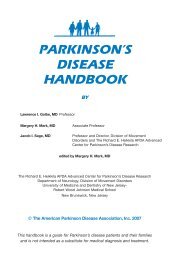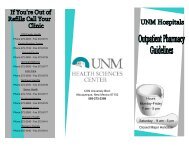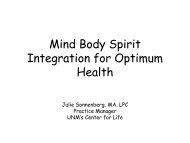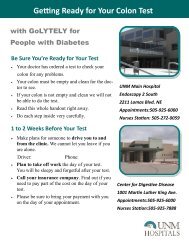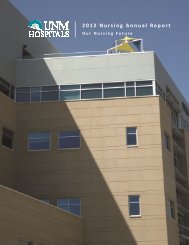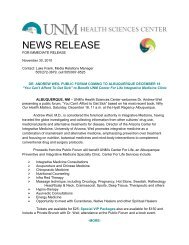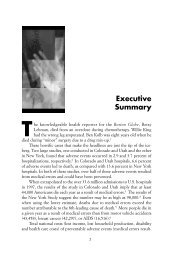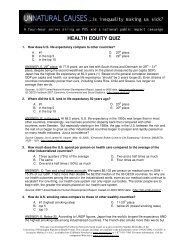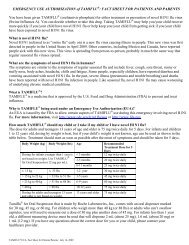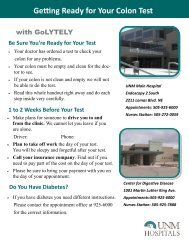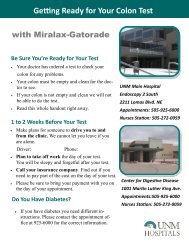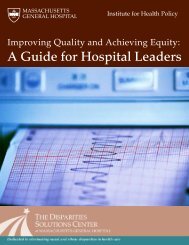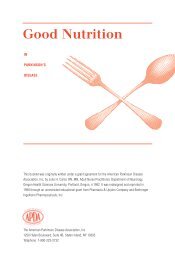Advanced Effective Communication, Cultural Competence, and ...
Advanced Effective Communication, Cultural Competence, and ...
Advanced Effective Communication, Cultural Competence, and ...
Create successful ePaper yourself
Turn your PDF publications into a flip-book with our unique Google optimized e-Paper software.
A Roadmap for Hospitals<br />
Chapter Six: Organization Readiness<br />
Table 6-1. Five Domains of Organization Readiness for Implementing<br />
<strong>Effective</strong> <strong>Communication</strong>, <strong>Cultural</strong> <strong>Competence</strong>, <strong>and</strong><br />
Patient- <strong>and</strong> Family-Centered Care<br />
1. Leadership. Leaders must clearly articulate a hospital’s commitment to meet the unique needs of its patients to<br />
establish an organization culture that values effective communication, cultural competence, <strong>and</strong> patient- <strong>and</strong> familycentered<br />
care.<br />
2. Data Collection <strong>and</strong> Use. The hospital must define what types of data to collect, how to collect data, <strong>and</strong> how to use<br />
data for service planning <strong>and</strong> resource allocation to advance effective communication, cultural competence, <strong>and</strong><br />
patient- <strong>and</strong> family-centered care.<br />
3. Workforce. The hospital <strong>and</strong> its staff, including the medical staff, must commit to meeting the unique needs of the<br />
patients they serve.<br />
4. Provision of Care, Treatment, <strong>and</strong> Services. The hospital, in striving to meet the individual needs of each patient,<br />
must embed the concepts of effective communication, cultural competence, <strong>and</strong> patient- <strong>and</strong> family-centered care into<br />
the core activities of its care delivery system.<br />
5. Patient, Family, <strong>and</strong> Community Engagement. The hospital must be prepared to respond to the changing needs <strong>and</strong><br />
demographics of the patients, families, <strong>and</strong> the community served. The hospital can identify the need for new or<br />
modified services by being involved <strong>and</strong> engaged with patients, families, <strong>and</strong> the community.<br />
• Maintain the confidentiality of sensitive patient<br />
information, including race, ethnicity, disability, sexual<br />
orientation, <strong>and</strong> gender identity or expression<br />
information.<br />
• Protect patients from discrimination based on age, race,<br />
ethnicity, religion, culture, language, physical or mental<br />
disability, socioeconomic status, sex, sexual orientation,<br />
<strong>and</strong> gender identity or expression.<br />
• Allow patients open access to their medical records to<br />
review their health care information <strong>and</strong> encourage<br />
patients <strong>and</strong> families to participate in care discussions.<br />
Recommended Issues <strong>and</strong><br />
Related Practice Examples that<br />
Address the Data Collection <strong>and</strong><br />
Use Domain of Organization<br />
Readiness<br />
❑ Conduct a baseline assessment of the<br />
hospital’s efforts to meet unique patient<br />
needs.<br />
Organization assessments <strong>and</strong> other assessments (such as<br />
patient satisfaction surveys, data on readmissions, <strong>and</strong> so<br />
on) can <strong>and</strong> should be used to develop <strong>and</strong> monitor the<br />
effects of focused quality improvement activities that<br />
support effective communication, cultural competence,<br />
<strong>and</strong> patient- <strong>and</strong> family-centered care. It is important for<br />
hospitals to conduct an organization assessment that<br />
measures baseline performance on specific issues to know<br />
where improvement might be necessary, detect gaps <strong>and</strong><br />
areas of excellence, <strong>and</strong> tailor improvement interventions.<br />
An organization assessment can include st<strong>and</strong>ardized tools<br />
that allow for valid cross-organizational comparisons,<br />
benchmarking, <strong>and</strong> objective performance tracking over time.<br />
Assessments may comprise informal discussions, organization<br />
or individual self assessments, or st<strong>and</strong>ardized evaluations.<br />
Some helpful examples of organization assessment tools<br />
<strong>and</strong> resources include the Joint Commission’s “Tailoring<br />
Initiatives to Meet the Needs of Diverse Populations: A<br />
Self-Assessment Tool” [9], the 360-degree organizational<br />
communication climate assessment toolkit from The<br />
Ethical Force Program ® (led by the Institute for Ethics at<br />
the American Medical Association) [2,10,11], Planetree’s<br />
“Self-Assessment Tool” in its Patient-Centered Care<br />
Improvement Guide [12], Conducting a <strong>Cultural</strong> <strong>Competence</strong><br />
Self-Assessment [13], The Americans with Disabilities Act<br />
Checklist for Readily Achievable Barrier Removal [14], or<br />
information included in the Human Rights Campaign<br />
Foundation’s Healthcare Equality Index [15].<br />
• Identify existing hospital policies <strong>and</strong> procedures that<br />
support effective communication, cultural<br />
competence, <strong>and</strong> patient- <strong>and</strong> family-centered care.<br />
• Collect feedback from all key stakeholder groups.<br />
35



